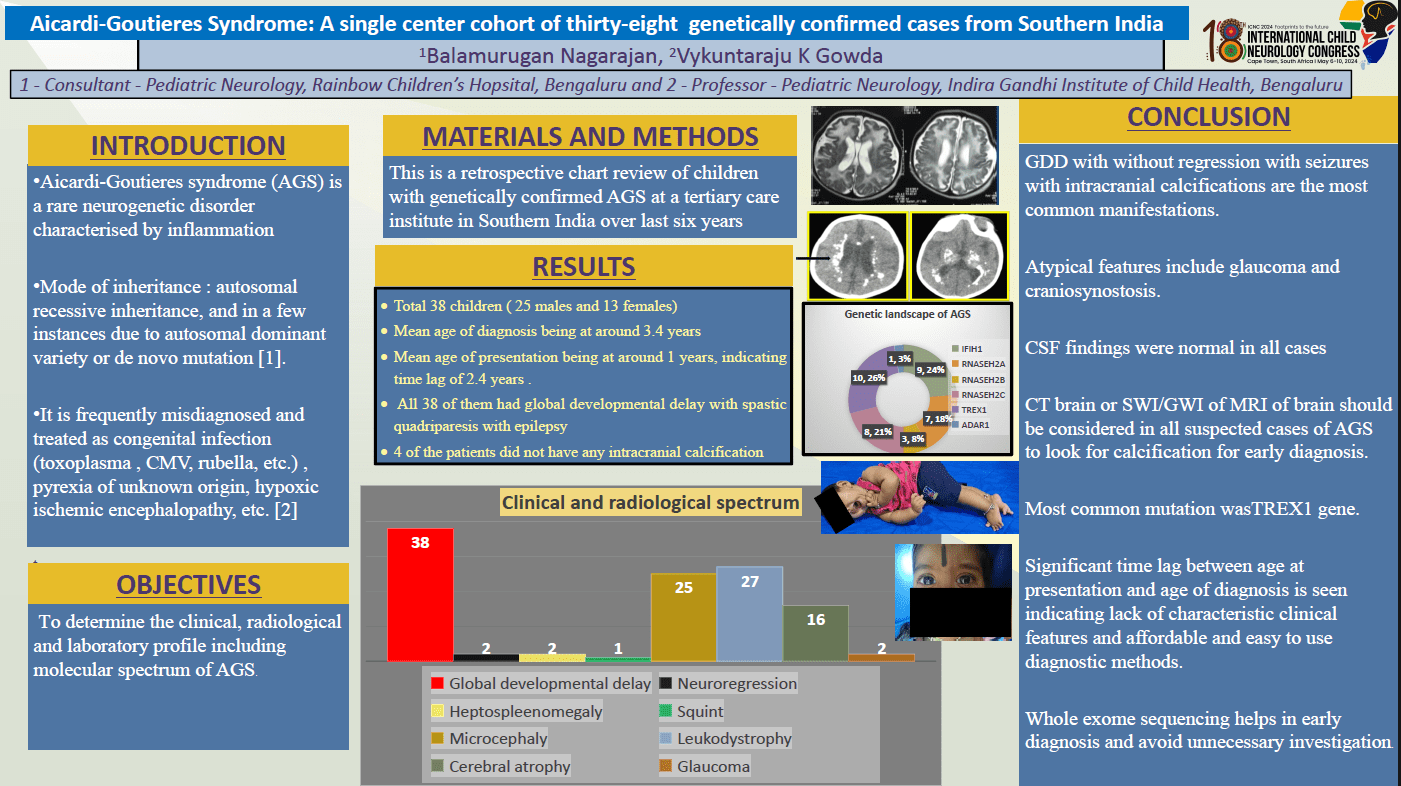Aicardi-Goutieres Syndrome: A Single Center Cohort Of Thirty-Eight Genetically Confirmed Cases From Southern India
Introduction: Aicardi-Goutières syndrome (AGS) is a rare neurogenetic disorder and this study was performed with an objective to determine the clinical, radiological and laboratory profile including molecular spectrum of AGS.
Methods: This is a retrospective chart review of children with genetically confirmed AGS at a tertiary care institute in Southern India over last six years
Results: Among the total 38 children, 25(66%) were males Median age at presentation was 12 months and median age at diagnosis was 40 months indicating lag in time to diagnosis. All 38 (100%) presented with global developmental delay with spastic quadriparesis with epilepsy with 2(5%) having developmental regression at the time of diagnosis. One child was treated as pyrexia of unknown origin for 2 years and none of them had any skin lesions. Twenty-four (63%) had microcephaly. Five (13%) had optic atrophy and two (5%) had glaucoma; 2 (5%) presented with hepato-splenomegaly and 3 (8%) had transaminitis. CSF analysis was done in four and all were normal. CT scan showed intracranial calcification in all except four cases. On MRI Brain, 13(37%) showed leukodystrophy pattern and 7/13 had diffuse cerebral atrophy. Additionally, 4 cases had cystic changes in MRI. One had craniosynostosis; TREX gene was the commonest gene identified in 10/38 (26%) , followed by IFIH 9 (24%). Others include RNASEH2A 7(18%), RNASEH2B 3(8%), RNASHE2C 8(21%) and ADAR1 1(3%). .
Conclusion: The clinical, neuroimaging and laboratory profile are non-specific and genetic testing is the only definitive investigation which helps in early identification and preventing recurrence.
BALAMURUGAN N
RAINBOW CHILDREN'S HOSPITAL
India
VYKUNTARAJU K GOWDA
INDIRA GANDHI INSTITUTE OF CHILD HEALTH
India

BALAMURUGAN N
RAINBOW CHILDREN'S HOSPITAL
India